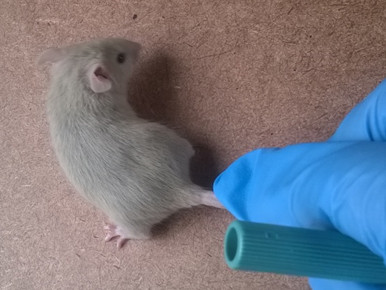16 May 2018 | By Rolanda Julius
The helminth parasites harboured by invasive rodents in South Africa are closely related to geographically distant counterparts. This was revealed by research conducted on parasitic worms of the brown rat (Rattus norvegicus), the black rat (Rattus rattus) and the Asian house rat (Rattus tanezumi) in urban areas of Gauteng Province by C·I·B doctoral student, Rolanda Julius at the University of Pretoria.
It is well-known that invasive rodents in South Africa were introduced from various regions around the world and on more than one occasion. Whether the parasitic worms which occur in the gastrointestinal tract of invasive rodent hosts were co-introduced or acquired in the newly invaded area remains unclear.
To investigate this, Rolanda collected parasitic worms, such as roundworms and tapeworms, from the gastrointestinal tract of invasive rodents and compared those using genetic sequencing.

The results showed that some roundworms, called pinworms, recovered from rodents in the study are similar to parasitic worms collected from laboratory rodents in China and the USA while another parasitic worm showed genetic similarity to worms from the same host species in its native range. This suggests that the parasitic worms were co-introduced with their invasive rodent hosts and that these areas likely reflect the origins of the rodent hosts.
Rolanda explains, “While introduced rat species may lose parasites in the invaded range (enemy release hypothesis), they certainly retain some, and these parasites may infect new host species. When this happens, subsequent eradication of the introduced, invasive species may not be enough to reverse its impact. Co-introduced parasites may have devastating effects when they infect indigenous animals as they would not have the immune defences against the new infection.” She adds that “these type of studies on invasive host species and their parasites may be useful in determining the dispersal and distribution patterns of invasive species.”
The full paper can be viewed at: Julius, R.S., Schwan, E.V. & Chimimba, C.T. Molecular characterization of cosmopolitan and potentially co-invasive helminths of commensal, murid rodents in Gauteng Province, South Africa. Parasitol Res (2018) 117: 1729. https://doi.org/10.1007/s00436-018-5852-4
For more information, contact Rolanda Julius at rsjulius@zoology.up.ac.za



